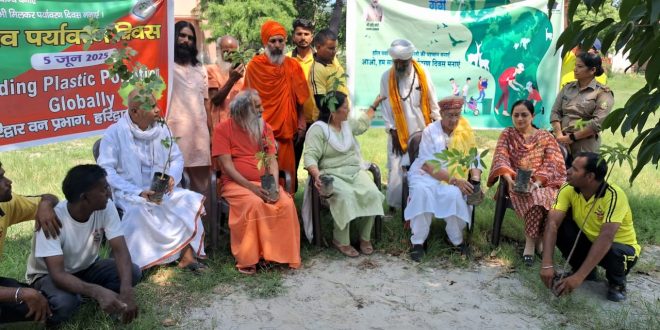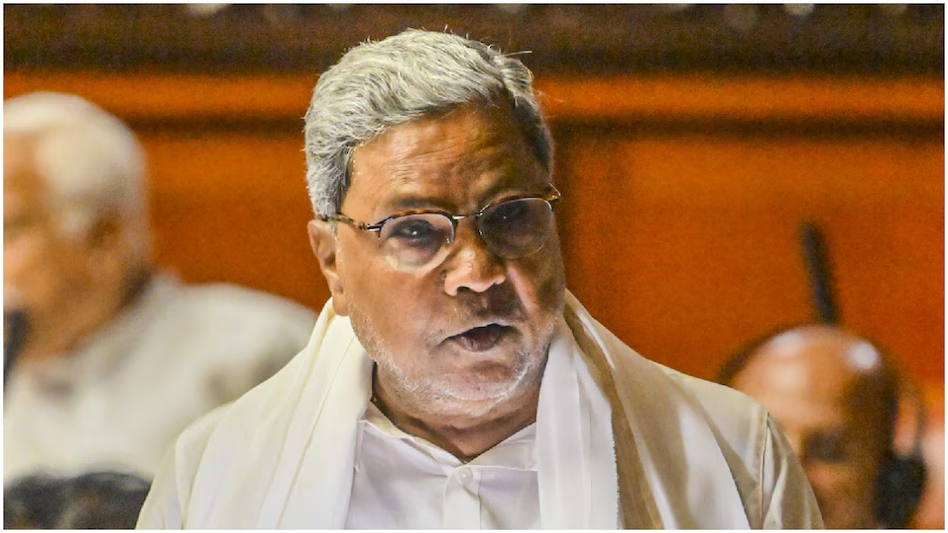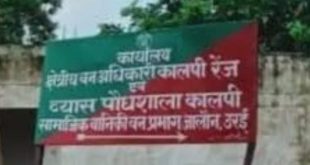Haridwar : Plastic has made our lives easier in the modern age. It is a cheap, durable, good and lightweight material that is used in every field from car parts to medical devices. Since the 1950s, researchers estimate that humanity has produced 9.2 billion tons of the material, of which some 7 billion tons have been wasted. But this plastic has now become an environmental crisis. Its excessive and improper use is very harmful to our ecosystem.
When plastic waste is not properly destroyed or recycled, it spreads into the land, water and air, causing pollution. This waste does not decompose through natural processes and remains for years. This is called “plastic pollution”. Plastic takes hundreds of years to decompose and during this time it turns into small particles (microplastics) that get into our food and water sources. Scientists estimate that at least 1,000 sea turtles die each year due to entanglement in plastic, that is, on average, more than one turtle dies every nine hours. One of the main types of plastic waste that sea turtles eat is plastic bags, which look like jellyfish. Therefore, “plastic pollution” is one of the most serious environmental problems of today’s artificial intelligence time.
South Korea has taken the responsibility of hosting the 2025 World Environment Day and will lead global efforts against “plastic pollution” in collaboration with the United Nations Environment Programme (UNEP). Its main objective is to reduce the number of plastics produced worldwide each year, more than two-thirds of which are degraded and cause pollution in the environment. The role of “plastic pollution” is especially “single-use plastics such as bags, bottles, straws and packing materials etc. are the main sources of this problem.
If we talk about the global perspective, “Plastic Overshoot Day” was celebrated on 5 September 2024, when the world crossed its annual plastic production limit. The second initiative was the United Nations Development Program (UNDP) managed more than 1,600 tons of plastic waste in 2024 under the “Recycling Hope” program. In this, 38.000 Safai Mitras were trained and awareness campaigns were run for garbage separation in more than 12,000 households. Apart from this, Canada took a step towards a global plastic pollution treaty and announced that the entire life cycle of plastic production, use and disposal is to be controlled.
New technologies such as advanced recycling, blockchain-based material tracking, and AI-powered waste sorting are currently being adopted. Policies such as banning plastic wipes and plastic balloons are being implemented in many countries (for example, new legislation in Spain starting in 2025). In addition, the World Economic Forum’s Global Plastic Action Partnership (GPAP) strengthened global efforts against plastic pollution by adding 25 countries in 2025. These countries have adopted joint strategies for managing plastic waste, recycling, and environmental sustainability. Microplastics have been found in 92% of the fish eaten in the world, which can cause cancer, decreased fertility, and effects on the nervous system in humans.
If we talk about India in this direction, then plastic pollution in India (2024-25) produces 9.3 million tonnes (93 lakh tons) of plastic waste every year. This is about 20% of the total plastic waste in the world. The state of plastic pollution in India is a growing threat of microplastics. In 2024, India became one of the major emitters of microplastics in water bodies. The country released about 31,483 tonnes of chemical additives into water bodies, which had a serious impact on water life and human health. The concentration of microplastics in the Ganges river was found to be higher than other major rivers, which shows the severity of pollution. Similarly, the sinking of the MSC Elsa 3 ship off the coast of Kerala spread millions of plastic pellets into the sea, causing a crisis for marine life and the livelihood of fishermen.
If we talk about the solution to plastic pollution, then there have been many important initiatives and events in India and around the world to deal with plastic pollution in 2025, which give positive signs towards environmental protection, such as using less plastic, using cloth bags, steel bottles and glass containers and boycotting single-use plastic. Separate plastic waste and send it to the recycling center. The Government of India has banned “single use plastic” from 2022. But efforts like ‘Swachh Bharat Mission’ and “Plastic Free India Campaign” are going on. Therefore, awareness campaigns should be run in schools, colleges and society.
(Through street plays, posters and banners at stations) So that people know how serious the ill effects of plastic are.
These initiatives clearly show that concrete steps are being taken at the global and national levels against plastic pollution. Although challenges still remain, this crisis can be overcome with joint efforts. On this World Environment Day, let us all take a small step towards a “plastic free life” from today itself which can turn into a big revolution tomorrow.
 Indian Thought Latest News & Views
Indian Thought Latest News & Views



